I came with my teenage kids with varied interests and we had inclement weather. Maria did an EXCELLENT job of managing our itinerary to meet everyone’s needs while minimizing the weather impact. We had a wonderful trip and got out $’s worth!Skip, Osaka, 2025
Table Of Contents
- Why Early April Is Blossom Heaven and Total Chaos
- What’s Osaka Like During the Rainy Season?
- Why I Like the Shoulder Season (Early October & Early December) Best
- Summer in Osaka: Festivals, Sweat, and Food Stalls
- Is April Really the Best Month to Visit Osaka?
- What’s the Rainiest Month in Osaka?
- Autumn Leaves vs Fewer Tourists: Late November’s Underrated Beauty
- Which Season Is Best in Osaka?
- What to Wear, When: Osaka Weather by the Month
- When Not to Visit Osaka?
- How Many Days in Osaka Is Enough?
- Key Events Throughout the Year
- Is October a Good Time to Visit Osaka?
- The Bottom Line on Timing Your Osaka Visit
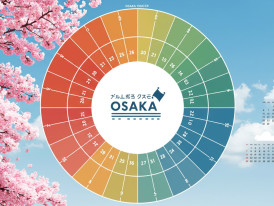
Seasonal wheel of Osaka weather
When Is the Best Time to Visit Osaka?
Growing up in Osaka, I've watched countless visitors stumble through the city at precisely the wrong time.
They show up during peak season expecting Instagram-perfect cherry blossoms, only to find themselves shoulder-to-shoulder with tour groups in 90-degree heat.
Or they arrive in mid-June, unprepared for the relentless humidity of the rain season.
The truth about the Osaka best time to visit isn't what travel blogs typically tell you.
It's not just about cherry blossoms and autumn leaves. It's about understanding when you can actually enjoy this city without fighting crowds, weather, or your own comfort level.
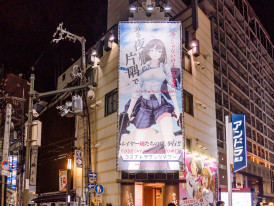
Busy Dotonbori street scene showing typical tourist crowds during peak season
After a lifetime of navigating Osaka weather patterns and seasonal rhythms,
I've learned that the best time to visit Osaka depends entirely on what you value most: iconic experiences, comfortable temperatures, or breathing room to actually explore.
The short answer: The beginning April for cherry blossoms (if you can handle chaos), early October for perfect weather, or begin December for the sweet spot of cool temperatures and manageable crowds.
Your Osaka, Your Moment
See the city in its best light. Chat with a local who knows the vibes of each season and how to make them yours.
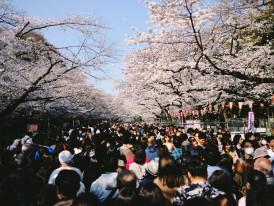
Crowds at Osaka Castle Park during cherry blossom viewingPhoto by Trevor Paxton on Unsplash
Why Early April Is Blossom Heaven and Total Chaos
Let's address the elephant in the room first. Yes, the fully bloomed cherry tress are spectacular. The sakura transform Osaka Castle Park into something that looks straight out of a postcard.
But here's what nobody tells you about early April: it's a beautiful nightmare.
I've lived through many Hanami seasons here, and every year the crowds get worse.
Cherry blossom viewing isn't the peaceful, contemplative experience you might imagine. It's more like a very pretty outdoor concert where everyone's trying to get the same photo.
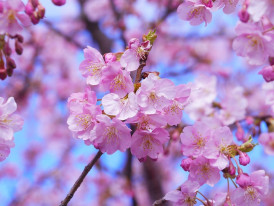
Close-up of sakura in full bloom at Maruyama Park Image by マサコ アーント from Pixabay
The cherry blossoms typically reach full bloom in late march to early April, lasting about a week if you're lucky.
The timing varies year to year, which adds another layer of complexity to planning. I've seen visitors arrive a week too late to find nothing but green leaves and deep regret.
If you're determined to visit during the Hanami season, book accommodations six months ahead and prepare for premium prices on everything from hotels to train tickets.
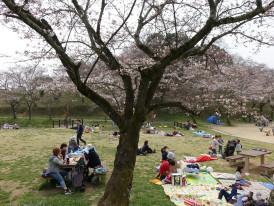
Traditional Japanese family doing hanami picnic under blooming cherry trees Photo by Arthur Tseng on Unsplash
The crowds during peak season aren't just tourists. Japanese families and office workers flood parks for Hanami parties, claiming spots with blue tarps at dawn.
Popular viewing spots like Osaka Castle become virtually impassable.
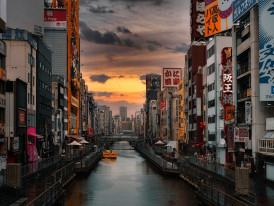
Umbrellas in Dotonbori during mid-June drizzle with reflection on wet pavement Image by djedj from Pixabay
What’s Osaka Like During the Rainy Season?
Rainy season hits Osaka hard from mid June through early July. This isn't the romantic drizzle you see in movies. It's weeks of oppressive humidity punctuated by sudden, dramatic downpours that can flood streets in minutes.
The Osaka weather during rainy season makes sightseeing genuinely unpleasant.
Temperatures hover around the June average high of 82°F (28°C), but the humidity makes it feel like you're walking through soup.
Your clothes stick to you, your camera lens fogs up, and outdoor attractions become exercises in misery.
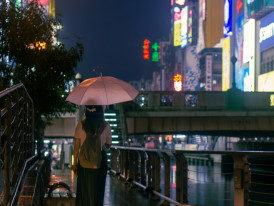
Steam rising from wet Osaka streets after a summer rain shower Photo by Georgi Tashkin on pexels
However, the rain does come with one significant advantage: far fewer tourists. If you can handle the weather, hotel prices drop and popular attractions become manageable.
I've had Osaka Castle almost to myself on a drizzly Tuesday in late June.
The drizzly season typically lasts about six weeks, though the exact timing shifts yearly. Some years it starts in early June, others not until mid-June.
Weather lingers unpredictably, making it difficult to plan around.
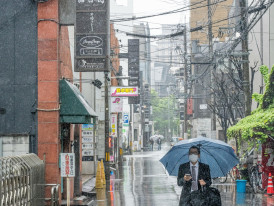
Local businessman with umbrella navigating flooded Osaka sidewalk during heavy rain Photo by Hugo Sykes on pexels
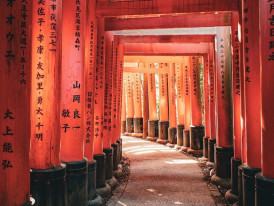
A near-empty Sumiyoshi Taisha shrine in early December with autumn colors. Image by Katharina Michels from Pixabay
Why I Like the Shoulder Season Best
Early October is my favorite time to visit Osaka. The oppressive summer heat finally breaks, typhoon season winds down, and the city becomes genuinely pleasant to explore on foot.
September average high temperatures still hover around 84°F (29°C), but by early October, things cool to a comfortable range.
You can walk around Osaka without constantly seeking air conditioning or carrying a towel for sweat.
The shoulder season offers the best balance of pleasant weather and reasonable crowds.
Major attractions remain busy but manageable.
You can actually enjoy fully bloomed sakura spots without the spring madness, though obviously without the blossoms.
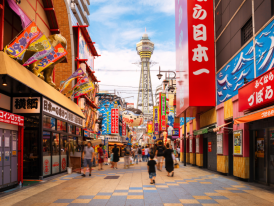
Quiet street in Shinsekai district during shoulder season with comfortable walking weather
Early December presents another excellent window.
December average high temperatures around 59°F (15°C) make exploring comfortable with just a light jacket. The winter season hasn't fully arrived, but summer's brutal humidity is long gone.
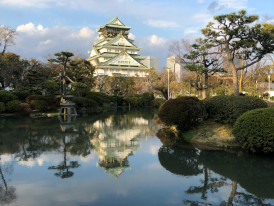
Osaka Castle grounds in early December with few visitors and clear skies Photo by Ann Lysenko on pexels
During these shoulder periods, you'll encounter fewer crowds at key events and attractions. Restaurant reservations become possible without weeks of advance planning. International flights often cost less than during peak season periods.
The shoulder period changes Osaka from a destination you endure to one you actually enjoy.
See Osaka at Its Best, With Someone Who Knows When That Is
A local host helps you time your trip right and tailors every moment to you.
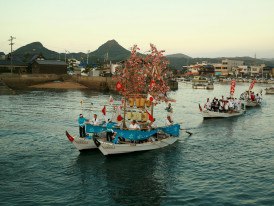
Tenjin Matsuri boat procession on the Okawa River with traditional lanterns. Photo by MATSUDA Akihiro on pexels
Summer in Osaka: Festivals, Sweat, and Food Stalls
Summer in Osaka tests your tolerance for heat and humanity. July average high temperatures reach 87°F (31°C), august average high climbs to 89°F (32°C), and the humidity makes both feel significantly worse.
But summer also brings Osaka's best festivals. Tenjin Matsuri in late July ranks among Japan's top three festivals, featuring elaborate boat processions and thousands of lanterns floating down the Okawa River.
The spectacle justifies the sweat, barely.
Food stalls multiply during summer festivals, offering everything from takoyaki to kakigōri (shaved ice).
The festival atmosphere partially compensates for the brutal Osaka weather, though you'll still spend most of your time seeking shade or air conditioning.
Summer also hosts unique events like Osaka Auto Messe, typically held in early July at Intex Osaka.
Car enthusiasts flood the city for this massive automotive showcase, adding another layer of crowds during an already busy season.
The summer months from early July through late August is Osaka's most challenging weather period.
Afternoon showers provide brief relief but add humidity.
Plan indoor activities during midday hours and embrace the festival culture if you visit during this period.
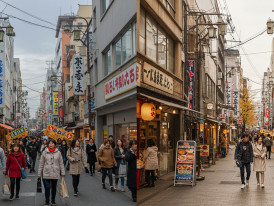
Comparison shot showing the same Osaka street in April (crowded) versus October (peaceful).
Is April Really the Best Month to Visit Osaka?
This question comes up constantly, and my answer surprises people: probably not, unless cherry blossoms are your only priority.
Yes, April offers the iconic cherry blossom experience.
The weather is generally pleasant, with temperatures in the comfortable 60-70°F range.
But the crowds, prices, and general chaos often overshadow the natural beauty.
I've guided visitors through both April and early October, and the October visitors consistently report better experiences.
They can actually see Osaka castle without fighting for photo opportunities.
They can book restaurants without weeks of planning.
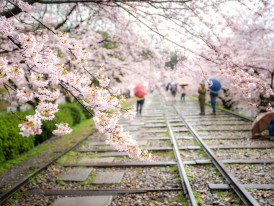
Mid-April sakura viewing at Kema Sakuranomiya Park with moderate crowds
If you're determined to visit during cherry blossom season, consider the last weeks of March instead of April. The blossoms often start blooming earlier than official forecasts predict, and you might catch them before peak crowds arrive.
April works best for visitors who prioritize iconic experiences over comfort and budget considerations.
More than 26,259 5-star reviews and counting
26,259+ 5-Star Reviews and Counting
Trusted and recommended by travelers worldwide.
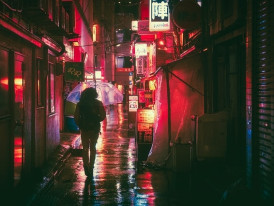
Japanese street looking awesome
What’s the Rainiest Month in Osaka?
June claims the title of Osaka's rainiest month, receiving about 7.4 inches of precipitation on average. But rainfall in Osaka isn't evenly distributed throughout rain season.
The rain season lasts from roughly mid-June through mid-July, with June typically seeing the heaviest and most consistent rainfall.
July gets plenty of rain too, but it often comes in shorter, more intense bursts.
Understanding Osaka's rain patterns helps with planning.
Early June often stays relatively dry before the main rainy season kicks in.
Late July sees the weather transitioning toward summer's typical afternoon thunderstorms.
The rain itself isn't the main problem, it's the humidity that comes with it.
Even when it's not actively raining during rainy season, the air feels thick and oppressive.
This affects everything from your energy levels to how quickly your clothes dry.
Avoid Osaka in June if you're sensitive to humidity or planning outdoor activities.
The weather will fight you every step of the way.
Find Your Perfect Season to See Osaka
From sakura strolls to neon nights, explore Osaka with someone who knows when (and where) the city truly comes alive.
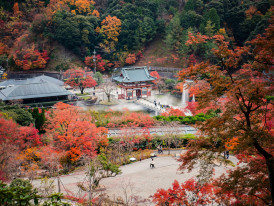
Photo by Satoshi Hirayama, Pexels
Autumn Leaves vs Fewer Tourists: Late November’s Underrated Beauty
Late November might be Osaka's best-kept secret for timing your visit.
The autumn foliage peaks, temperatures cool to pleasant levels, and tourist crowds thin out significantly.
Autumn leaves in Osaka don't match Kyoto's famous displays, but they offer their own understated beauty.
Parks like Minoo offer spectacular autumn foliage without the crushing crowds of more famous destinations.
The November average high temperature around 64°F (18°C) makes walking around comfortable without heavy layers.
You might need a light jacket in the evenings, but daytime exploration remains pleasant.
Late November is true low season for tourism.
Hotels lower their rates, restaurants have availability, and you can actually enjoy popular sightseeing spots without constantly navigating crowds.
Vibrant autumn leaves provide excellent photography opportunities with better lighting conditions than summer's harsh glare.
The autumn foliage season typically lasts from early November through early December, offering a longer window than cherry blossoms.
Late November gives you Osaka's natural beauty without the logistical nightmares of peak season.
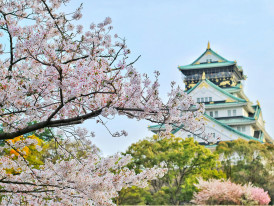
Photo by Bagus Pangestu, Pexels
Which Season Is Best in Osaka?
After experiencing every season multiple times, I consistently recommend fall for most visitors. Autumn offers the sweet spot of pleasant weather, manageable crowds, and reasonable prices.
Spring brings cherry blossoms but also chaos.
Summer delivers festivals and energy alongside brutal heat.
Winter offers the least crowds but also the most limited outdoor activities.
Autumn provides consistent pleasant time for exploration without major weather challenges.
Early October through late November encompasses Osaka's most comfortable weather window.
The autumn shoulder season also aligns well with other popular Japan destinations.
You can comfortably visit Osaka and extend to Kyoto or Tokyo without fighting peak season crowds everywhere.
Ultimately, the best season depends on your priorities: spring for cherry blossoms, summer for festivals, autumn for comfort, or winter for solitude.
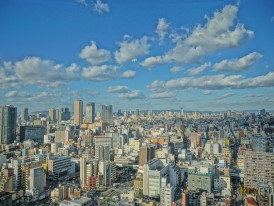
japan, osaka, panorama, sky, nature, landscape, autumn, cloud, osaka panoramic view, tower
What to Wear, When: Osaka Weather by the Month
January requires warm clothes with the January average high around 50°F (10°C). Pack layers, a thick coat for evenings, and waterproof shoes for occasional rain.
February through early March demands similar winter gear, though February average high temperatures start climbing slightly. Late march signals the beginning of more variable weather as spring approaches.
Early spring through late march allows for lighter layers. A light jacket handles most situations, though mornings and evenings can still feel chilly.
Summer months require the lightest possible clothing. Breathable fabrics, sun protection, and portable cooling solutions become essential.
The humidity makes even lightweight clothing feel heavy.
Early autumn through late October allows comfortable casual clothing. Long sleeves become useful in the evenings, but daytime temperatures remain pleasant for most activities.
Pack according to specific timing rather than general seasons, Osaka's weather can shift quickly between months.
When Not to Visit Osaka?
Three periods consistently challenge visitors: mid-June through early July, late July through August and Golden Week in early May (domestic tourism surge).
Rain season makes outdoor exploration miserable while peak summer heat creates genuine health risks for unprepared visitors. Golden Week brings domestic crowds that rival international cherry blossom tourism.
Late December through early January also presents challenges, though different ones.
Many businesses close for New Year celebrations, and winter season weather can limit outdoor activities.
Typhoon season from late August through early October adds weather unpredictability.
While direct hits remain rare, the season brings heavy rain and strong winds that can disrupt travel plans.
Avoid these periods unless you have specific reasons to visit during challenging conditions.
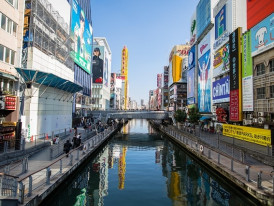
Osaka Dotonbori
How Many Days in Osaka Is Enough?
Most visitors need three to four days to experience Osaka's essential attractions without rushing. This allows time for key events, food exploration, and a day trip to nearby destinations.
Two days feels rushed unless you're specifically targeting a few key experiences.
Five or more days works well if you plan to use Osaka as a base for exploring the Kansai region.
The time to visit Osaka also depends on your travel pace and interests.
Foodie travelers might need extra time for restaurant exploration, while theme park enthusiasts could spend a full day at universal studios japan.
Plan at least three days to avoid feeling like you're constantly rushing between attractions.
See Osaka in Any Season
From cherry blossom strolls to cozy winter bites, explore the city with a local who gets what you’re looking for, whatever the weather.
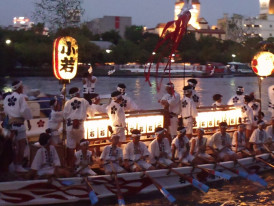
Tenjin Matsuri - Photo by MASA, Creative Commons
Key Events Throughout the Year
Understanding Osaka's key events helps time your visit around cultural experiences or away from massive crowds, depending on your preference.
Spring brings Hanami but also crowds. Summer features Tenjin Matsuri and other major festivals alongside Osaka Auto Messe for automotive enthusiasts.
The Aizen festival in late June/early July offers cultural experiences during an otherwise challenging weather period.
Halloween horror nights at universal studios japan brings autumn entertainment for theme park fans.
Winter season events focus more on illuminations and indoor cultural activities.
Each season offers distinct key events that can enhance or complicate your visit depending on your interests.
Research specific event dates when planning, they can significantly impact crowds and accommodation availability.
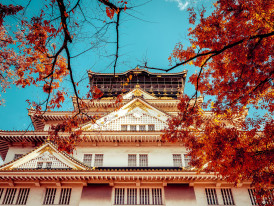
Photo by Dawn Lio, Pex
Is October a Good Time to Visit Osaka?
October ranks among my top recommendations for visiting Osaka.
Early October offers the perfect combination of pleasant weather, manageable crowds, and reasonable prices.
The early October weather breaks summer's oppressive heat while avoiding winter's limitations.
You can comfortably walk around all day without constantly seeking climate control.
Fewer tourists mean you can actually enjoy popular attractions.
Restaurant reservations become possible without weeks of advance planning.
Hotel prices return to reasonable levels after summer's peak season premiums.
Late October can bring occasional typhoon activity, but early October typically avoids these weather disruptions. The typhoon season usually winds down by mid-October.
October, particularly early October, offers Osaka at its most accessible and enjoyable.
The Bottom Line on Timing Your Osaka Visit
After years of observing seasonal patterns and visitor experiences, I've concluded that the Osaka best time to visit depends entirely on what you're willing to sacrifice for what you want to gain.
Want to see fully bloomed sakura? Accept crowds, high prices, and logistical challenges during Hanami season.
Prefer comfortable weather and manageable tourism?
Choose the shoulder season periods in early October or early December.
Need to experience summer festivals?
Prepare for brutal heat and humidity but incredible cultural experiences.
The time to visit Osaka that works best for you aligns with your personal travel priorities and tolerance levels. There's no universally perfect time, only trade-offs that matter more or less to different travelers.
Understanding these trade-offs before booking helps set realistic expectations and ensures you choose timing that matches your travel style.
Osaka rewards visitors who come prepared for seasonal realities rather than fighting against them.
Pick your priorities, plan accordingly, and don't expect any season to be perfect - each offers distinct advantages alongside specific challenges.
One City. One Local. One Perfectly Timed Experience.
SEE OSAKA EXPERIENCESSee Osaka in Season - Tailored to You
Whether you're chasing cherry blossoms or skipping the crowds, explore Osaka with a local who’s tuned into what matters to you.
Plan the Perfect Osaka Trip With a Local by Your Side
Chat with a local host who knows Osaka in every season. Ask anything, get honest answers, and feel confident before you book.











